U.S.S. Enterprise Overview
Created by Commodore Wilkan Targaryen on Fri Jan 5th, 2024 @ 2:25am
General Overview
Century Class
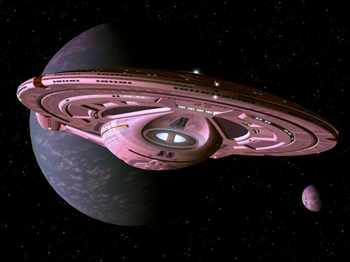 | |
| Affiliation: | Federation Starfleet |
| Service Period: | 25th - 26th Centuries |
| Length: | 702 meters |
| Width: | 278 meters |
| Height: | 85 meters |
| Mass: | 4,015,725 metric tons |
| Decks: | 23 |
| Crew: | 825 personnel 13,000 evacuation |
| Speed: | Warp 9.992 Coaxial Warp |
| Armament: | Phaser Arrays Phaser Banks Torpedo Launchers |
| Defenses: | Reactive Armor S.H.I.E.L.D.S. |
| Auxiliary craft: | Starfleet Captain's Yacht Starfleet Runabouts Starfleet Shuttlecraft Starfleet Shuttlepods |
 | |
A member of the Century Class, the Enterprise-H was designed to be the next generation flagship for the United Federation of Planet’s Starfleet. Intended to represent the power and prestige of the Federation, development of the Century Class was primarily a result of Starfleet forces being outmatched and outmaneuvered by technologically sophisticated opponents in the late 24th and early 25th Centuries, impacting the safety and security of the Federation.
Launched in 2439, the Enterprise has been assigned to the command of Commodore Willian Teagarden following the loss of the Constitution III Class U.S.S. Enterprise-G during the Battle of the Foundry.
Capabilities
Featuring the most advanced technologies of the era, the Century Class is well prepared for its mission of exploration and its role of representing the Federation as its next flagship class. The Century includes two hull sections (an ovoid-shaped primary hull and a cylindrical secondary hull fitting the ship's engine nacelles) manufactured with modular construction capabilities, as pioneered by the Inquiry Class, where whole sections were built separately and fitted together with computer, plumbing, and electrical equipment in place. In an emergency, Century Class ships can complete atmospheric operations and planetary landing in even the most extreme environments.
While the Century is a robust vessel, her greatest advancements come from the vessel’s Coaxial Warp Drive. A requirement due to its large size and energy demands, the Coaxial Drive had long been the dream of the Theoretical Propulsion Group until classified documents retrieved by the Starship Voyager were released to the Starfleet Corps of Engineers. Operating like a standard Warp Drive, the Coaxial Drive creates a warp field that then folds space upon itself by drawing in subatomic particles and reconfiguring their internal geometries for travel, generating incredible amounts of power in the process. Not without risk, the Coaxial Drive is required to be closely monitored for stability as a catastrophic system failure could collapse subspace for a range of up to 1 billion kilometers from the point of detonation. Faster-than-light propulsion is supplemented by the inclusion of a Quantum Slipstream Burst Drive located in the Primary Hull. Impulse Engines have been installed for sublight travel and have been augmented through the installation of Impulse Thrusters in place of traditional Reaction Control System Thrusters, improving the vessel’s overall maneuverability.
Based upon the pioneering work of Dr. Noonien Soong (and supplemented by the work of Doctors Bruce Maddox and Agnes Jurati), the computers on the Century comprise a fully functional positronic matrix based artificial neural network computer system capable of a base computational speed of roughly sixty trillion operations per second. This incredible computing power allows high degrees of automation aboard the Century, and has allowed for the installation of an advanced Artificial Intelligence known as the Artificial Intelligence Monitoring System, or AIMS, based upon the software revolutionized by the EXEO Core. These computer advancements augment the abilities of the Century’s scientific profile, supporting over 500 discrete scientific missions at any given time depending upon mission parameters. Advanced, modular laboratories are included throughout the Century and the latest generation of sensor pallets, probes, and telescopes are available for scientific and survey missions in uncharted territory.
While primarily an exploration vessel, the Century has teeth and is equipped with the latest generation of defenses and weaponry, including enhanced Phasers along with Photon and Quantum Torpedoes in its inventory. Primary defense for the Century is provided by the Specialized High Intensity Energy Level Deflector Shield, or S.H.I.E.L.D.S., an experimental advanced shielding grid that generates additional energy fields around the ship than standard shielding. A layer of reactive hull armor provides a last-ditch effort to protect the ship from danger while the external hull can complete minor regeneration when damaged thanks to reverse engineered Borg technology from the Borg Cube Artefact. Further augmenting the vessel's tactical profile, in overwhelming situations the Century can implement Fortress Mode, an operational mode which redirects all available power to weapons and defensive systems to enhance the ship’s tactical profile. While Fortress Mode makes the Century a dangerous opponent it limits the vessel’s ability to engage its propulsion systems, making retreat nearly impossible while engaged.
First of Class Design Changes and Design Differences within the Class
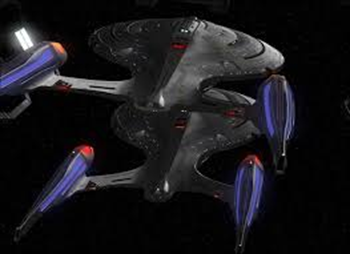 Production model Century Class vessels feature several design variations from the prototype vessel; nonetheless, Starfleet Command still views these vessels as part of a single class.
Production model Century Class vessels feature several design variations from the prototype vessel; nonetheless, Starfleet Command still views these vessels as part of a single class.Because of lessons learned from the Enterprise, the production model Century Class includes several enhancements over the Enterprise. While the Enterprise is fitted with a Coaxial Warp Drive for advanced faster than light travel and power generation, the technology is considered too experimental for widespread deployment within Starfleet. Through complex testing, the Theoretical Propulsion Group was able to enhance the Quantum Slipstream Burst Drive to allow for more robust energy generation, increasing the available power for the members of the Century Class. While still considered experimental in many respects, the operational history of the Quantum Slipstream Burst Drive led Starfleet to approve its incorporation into future Century Class designs in lieu of the Coaxial Warp Drive used by the Enterprise.
Through work with the Federation World Coppelius, Starfleet Research and Development has been able to enhance the operations of the Positronic Matrix Computer Cores in production Century Class starships. Recently produced Century Class ships have converted the interlink sequencer of their Computer Cores to an asynchronous mode of operation, which has removed performance constraints by creating space between the positronic links. This small upgrade has allowed for greater automation on newer Century Class vessels, reducing crew requirements by 11%.
Local construction methodologies have influenced the development process for the Century Class at several locations. Century Class Starships produced at the 40 Eridani A Starfleet Construction Yards, Vulcan, have been equipped with locally produced sensor lenses and related equipment, enhancing their sensitivity. The Laikan Fleet Yards, Andoria, have produced ships with slight structural differences from other Century Class Explorers, improving protection for ordnance stored in their magazines and around their antimatter storage pods. San Francisco Orbital Fleet Yards, Earth, has been producing Century Class vessels with experimental Neutronium Alloy Fibers that offer greater strength to the vessel's hull. Vessels produced by the Tellar Consolidated Fleet Yards, Tellar Prime, are being constructed with larger Fusion Cores, producing more energy to power the Century's systems.
History
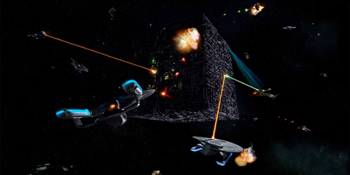
Background
While efforts to bring the Century to life would not reach fruition until the 25th Century, the initial design brief for the vessel can trace its origin to the reconstruction period following the Battle of Wolf 359. Following the devastating conflict in which 39 starships were lost in combat against a single Borg cube, the Starfleet Corps of Engineers partnered with Starfleet Tactical to devise a new vessel that could serve as a military command ship in future hostile engagements. Rather than focus critical resources on the development of a new class of vessel, the workgroup opted instead to focus efforts on reconfiguring the Sovereign Class to fulfil this mission brief. While such theories got the ball rolling on the development of the next generation explorer, relegating efforts to create such a vessel to theoretical papers.Soon afterward, Starfleet had a devastating first contact with the Gamma Quadrant’s Dominion. Under the direction of Admiral James Leyton of Starfleet Security, the Corps of Engineers Soon afterward, Starfleet had a devastating first contact with the Gamma Quadrant’s revisited plans for a new generation of military oriented exploration vessel. This design initiative led to the creation of the venerable Excalibur and Odyssey; however, Admiral Leyton set his focus on developing a new class of starship to represent the “larger than life” nature of the Federation. After Leyton was arrested for orchestrating a Starfleet coup of the Federation government, all work was immediately cancelled until the outbreak of the Dominion War.
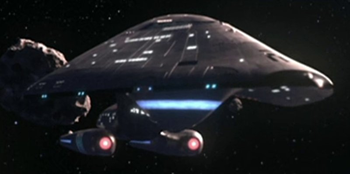 Work with what would become the Century would be revisited following the return of the Federation Starship Voyager in 2378. While many of the technologies brought back by Voyager were deemed classified, the Federation Council and Starfleet Command could not ignore the benefits provided by the Quantum Slipstream Drive that had been obtained during Voyager’s journey. Starfleet immediately began work replicating the Starship Dauntless – an alien craft that had been modified to resemble a Federation vessel – and the unique Spirit Class. Starfleet Command envisioned a series of capital class vessels to further incorporate the technology and design briefs were submitted for the LeMarr and Vesta Class and considerations were made to build additional capital vessels. As work began on the LeMarr and Vesta evidence was found that the Romulan star would supernova within the 2380s and lead to the destruction of the Romulan homeworld. An emergency authorization bill devised by the Federation Council ordered Starfleet to begin development of an armada of passenger transports to aid with the evacuation of the Romulan citizenry, pausing construction of any additional capital vessels.
Work with what would become the Century would be revisited following the return of the Federation Starship Voyager in 2378. While many of the technologies brought back by Voyager were deemed classified, the Federation Council and Starfleet Command could not ignore the benefits provided by the Quantum Slipstream Drive that had been obtained during Voyager’s journey. Starfleet immediately began work replicating the Starship Dauntless – an alien craft that had been modified to resemble a Federation vessel – and the unique Spirit Class. Starfleet Command envisioned a series of capital class vessels to further incorporate the technology and design briefs were submitted for the LeMarr and Vesta Class and considerations were made to build additional capital vessels. As work began on the LeMarr and Vesta evidence was found that the Romulan star would supernova within the 2380s and lead to the destruction of the Romulan homeworld. An emergency authorization bill devised by the Federation Council ordered Starfleet to begin development of an armada of passenger transports to aid with the evacuation of the Romulan citizenry, pausing construction of any additional capital vessels.
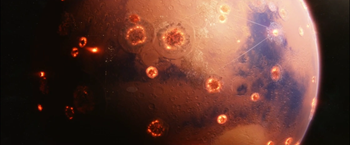 Starfleet design edicts would take another major blow on April 5, 2385, following the horrific attack by a group of reprogrammed synthetic labor units upon the Utopia Planitia Shipyards. The Mars Defense Perimeter was hacked by the rogue synthetics and turned against the planet Mars and the orbiting shipyards. The carpet bombing of the surface served to ignite the flammable vapors in the stratosphere and caused massive damage to the planet's infrastructure, killing 92,143 total people in the attack. With the loss of their largest shipyard and synthetic labor force, the Starfleet Corps of Engineers cancelled all pending projects. Construction contracts for future starships would also be reallocated to other shipbuilding facilities, limiting the Federation’s dependence upon one shipyard over another. Additionally, due to the decision to pause assistance to the Romulans in the evacuation of their homeworld and growing strain between the Federation/Klingons, the Federation Council ordered a refocused effort to build smaller, mission-specific, and resource efficient designs with a common architecture and a tactical edge. Despite this, realizing that morale throughout the Federation and Starfleet was at an all time low, the Federation Council called upon Starfleet to build a symbol to remind the galaxy of the traditions that made the Federation great as their next flagship class.
Starfleet design edicts would take another major blow on April 5, 2385, following the horrific attack by a group of reprogrammed synthetic labor units upon the Utopia Planitia Shipyards. The Mars Defense Perimeter was hacked by the rogue synthetics and turned against the planet Mars and the orbiting shipyards. The carpet bombing of the surface served to ignite the flammable vapors in the stratosphere and caused massive damage to the planet's infrastructure, killing 92,143 total people in the attack. With the loss of their largest shipyard and synthetic labor force, the Starfleet Corps of Engineers cancelled all pending projects. Construction contracts for future starships would also be reallocated to other shipbuilding facilities, limiting the Federation’s dependence upon one shipyard over another. Additionally, due to the decision to pause assistance to the Romulans in the evacuation of their homeworld and growing strain between the Federation/Klingons, the Federation Council ordered a refocused effort to build smaller, mission-specific, and resource efficient designs with a common architecture and a tactical edge. Despite this, realizing that morale throughout the Federation and Starfleet was at an all time low, the Federation Council called upon Starfleet to build a symbol to remind the galaxy of the traditions that made the Federation great as their next flagship class.
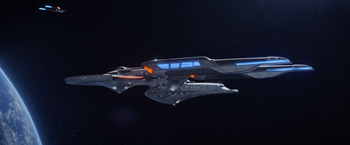 Now headquartered at the San Francisco Orbital Ship Yards on Earth, the Advanced Starship Design Bureau looked to the designs of previous generations to build Starfleet’s future, leading to the Constitution III and the revitalization of Leyton’s dream. Heir to the legacy of the Constitution and Constitution II Class, the Constitution III Class (or Neo-Constitution Class) was intended to be a return to the ideals of the Federation’s past. That was, however, where Admiral Leyton’s dream ended and the new era began. Designed by Starfleet to be the workhorse of the fleet, the Constitution III was designed to conduct exploratory missions, but also to support fleet operations when needed. While the ship was planned to be highly versatile and fill a variety of roles in the fleet, the new Constitution would have some deficiencies when compared to the more specialized craft used by Starfleet in that it lacks the advanced sensors or laboratories of dedicated science ships and the firepower of combat ships. While previous Constitution Class ships were flagships of the Federation, the Constitution III would see that role fulfilled by its larger Odyssey Class cousins.
Now headquartered at the San Francisco Orbital Ship Yards on Earth, the Advanced Starship Design Bureau looked to the designs of previous generations to build Starfleet’s future, leading to the Constitution III and the revitalization of Leyton’s dream. Heir to the legacy of the Constitution and Constitution II Class, the Constitution III Class (or Neo-Constitution Class) was intended to be a return to the ideals of the Federation’s past. That was, however, where Admiral Leyton’s dream ended and the new era began. Designed by Starfleet to be the workhorse of the fleet, the Constitution III was designed to conduct exploratory missions, but also to support fleet operations when needed. While the ship was planned to be highly versatile and fill a variety of roles in the fleet, the new Constitution would have some deficiencies when compared to the more specialized craft used by Starfleet in that it lacks the advanced sensors or laboratories of dedicated science ships and the firepower of combat ships. While previous Constitution Class ships were flagships of the Federation, the Constitution III would see that role fulfilled by its larger Odyssey Class cousins.
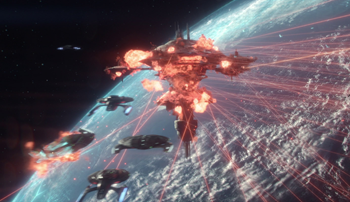 Following the Battle of Coppelius and the Borg Incursion of 2401, Starfleet returned to five-year missions and maintained their focus on building smaller, more specialized exploratory craft that would excel at shorter duration missions over larger vessels. While these versatile vessels performed their missions admirably, the ships and their crews were frequently overwhelmed during encounters with more technologically sophisticated and hostile species. Further, despite their successes, technological development and innovation stagnated throughout the Federation for the first time since the 22nd Century. Due to this the Federation Council and Starfleet Command looked for inspiration from the Starfleet Exploration Directive 1023.3 and the Perimeter Defense Directive to build their next generation explorer.
Following the Battle of Coppelius and the Borg Incursion of 2401, Starfleet returned to five-year missions and maintained their focus on building smaller, more specialized exploratory craft that would excel at shorter duration missions over larger vessels. While these versatile vessels performed their missions admirably, the ships and their crews were frequently overwhelmed during encounters with more technologically sophisticated and hostile species. Further, despite their successes, technological development and innovation stagnated throughout the Federation for the first time since the 22nd Century. Due to this the Federation Council and Starfleet Command looked for inspiration from the Starfleet Exploration Directive 1023.3 and the Perimeter Defense Directive to build their next generation explorer.
Starfleet Command quickly ordered construction on three primary designs to serve as the next generation of Starfleet. The first vessel ordered was the Galaxy III Class, which would feature opulent diplomatic accommodations and exploratory capabilities. Soon afterward, Starfleet commissioned the Intrepid II Class, which would replace the Pathfinder Class with its state-of-the-art scientific abilities. Finally, the Commonwealth Class would be Starfleet's tactically oriented exploratory vessel, featuring enhanced offensive capabilities compared to its compatriots. Realizing that they had not commissioned a design that could fulfill these priorities in a single package, Starfleet Command directed the Corps of Engineers to begin work on the Century. Designed to be the heart of exploration and defense of the Federation, the Century was designed to be the leading research and exploration vessel in Starfleet.
Design
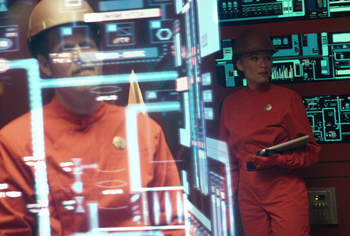 The Century Class Heavy Explorer was designed to serve as the new flagship vessel of Starfleet with the initial design brief called for a vessel that would embrace the classic hallmarks and durable nature of previous generations of Starfleet vessels. Designed in concert with the Commonwealth, Galaxy III, and the Intrepid II Classes, the Century would be required to operate outside of Federation support for long periods, incorporating design improvements discovered during the trials of the Federation's latest generation of explorers. Additional design responsibilities would include:
The Century Class Heavy Explorer was designed to serve as the new flagship vessel of Starfleet with the initial design brief called for a vessel that would embrace the classic hallmarks and durable nature of previous generations of Starfleet vessels. Designed in concert with the Commonwealth, Galaxy III, and the Intrepid II Classes, the Century would be required to operate outside of Federation support for long periods, incorporating design improvements discovered during the trials of the Federation's latest generation of explorers. Additional design responsibilities would include:
- Conduct long-range, deep-space exploration assignments away from Federation and Starfleet support.
- Represent the United Federation of Planets and its ideals during peacetime presence missions, supporting diplomatic efforts while executing Federation policy and procedure in frontier regions.
- Provide Command and Control of assigned United Federation of Planets and allied forces.
- Establish tactical superiority and maintain control of designated airspace.
- Oversee Humanitarian Assistance and Disaster Relief.
- Serve as a replacement for the Sovereign Class as Starfleet’s tactically oriented exploration vessel.
Facing cancellation, the Century Class was saved almost by accident when a Starfleet Corps of Engineers Team at New Holland Shipyards submitted design plans for a replacement for the aging California Class. Known as the Pennsylvania Class, the design was rejected for a secondary support role in Starfleet, but was forwarded by Commodore Dazad Targaryen for consideration for the Century Class. The blueprints were modified by the Century’s Design Team to meet the requirements of the design brief and to better fulfill the political and psychological design requirements intended for the Century to properly project the power, strength, and status of the Federation within the galaxy. Following review by Starfleet Command, the Starfleet Corps of Engineers, the Advanced Starship Design Bureau, and the Theoretical Propulsion Group, construction of the Century was ordered.
Construction and Launch
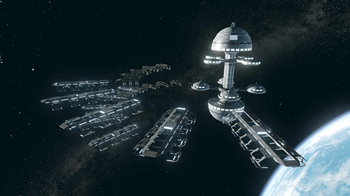 Construction of the Century Class began at San Francisco Fleet Yards after winning out against the New Holland Shipyards as Starfleet Security could not guarantee security for such a high profile project at this frontier location. San Francisco Yards, however, proved unable to provide the infrastructure to be the sole home of the Century. After review, Starfleet Command agreed that construction would extend away from Sol to include facilities at Beta Antares, followed by 40 Eridani A, Tellar Prime, and Andoria within the following years.
Construction of the Century Class began at San Francisco Fleet Yards after winning out against the New Holland Shipyards as Starfleet Security could not guarantee security for such a high profile project at this frontier location. San Francisco Yards, however, proved unable to provide the infrastructure to be the sole home of the Century. After review, Starfleet Command agreed that construction would extend away from Sol to include facilities at Beta Antares, followed by 40 Eridani A, Tellar Prime, and Andoria within the following years.One of the first priorities of the design, due to its size, was to find methods to speed construction while maintaining quality. Large industrial replicator units were built and installed in the drydocks used for Century's construction to assist with reducing construction time; however, with growing antagonism throughout the Beta Quadrant, Starfleet wanted to get their new flagship launched to help project the power of the Federation in the face of opposition. A solution came from modular construction techniques devised at Beta Antares during the development on the Inquiry Class. Entire sections of the vessel would be preconstructed with their decks, plumbing, and electrical equipment fitted to later be joined when the hull itself was completed. This modular construction ethos would improve overall efficiency, reduce resources needed, and ultimately save construction time.
As construction began it was soon found that the design would be incapable of handling the diverse mission profiles as, essentially, the Corps of Engineers put too many eggs into one basket. Century had many weapons and defensive systems for missions where she was standing in for the Federation in hotspots, but her engines and sensor systems were to be equally powerful so that she could be effective in her exploratory duties. Many of these systems and their components were still theoretical during the development stages when they were tapped for use in the ship’s construction. This led to design changes occurring even at the drydock as construction work was being completed, and more than one instance where months of work had to be scrapped and restarted due to simulations indicating some level of failure.
Resource delivery became another issue. An entire allocation of Duranium Alloy was lost while underway from the Qualor System when Nausicaan pirates raided a freighter convoy transporting the load, leading to a six-month delay and a destabilized timetable. Soon after it was determined that substandard composite was used in the creation of the Warp Coils and, while undergoing power up tests while attached to the drydock, the coils blew out causing structural damage to occur along the nacelle's superstructure. Work to repair those components resulted in a delay of eight months that was compounded when the units were connected to the Stardrive section and powered up for the first time.
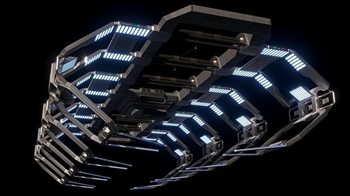 Initially design specifications intended for the Century to be powered by a Quantum Slipstream Drive; however, consideration was also given to installing an experimental Proto Drive for usage as a rapid response vessel. Early tests indicated that the Century would not be able to successfully incorporate the components of the Proto Drive into a workable model. Further, the Federation Council expressed concerns regarding their new flagship class incorporating such untested propulsion technologies and ordered that a traditional Warp Drive be installed. Retrofitting of the existing modules to accommodate this classic system resulted in several delays as the Warp Drive was prepared. While the power levels were within acceptable limits as set forth by the initial design brief, they were at the minimum levels of the spectrum as the new equipment utilized in the nacelles was barely compatible with the Warp Drive System selected. It was determined that when all shipboard systems were brought online the Warp Core would become overwhelmed and the ship would lose power, resulting in entire decks and their systems being shut-down to maintain other critical systems. Analysis of the data provided by the Century's computers, the construction yards, and sensor scans revealed several conflicting results; nevertheless, the problem resulted in the core assembly design having to be returned to the Theoretical Propulsion Group for complete redesign in effort to develop a new power core (the design of the core itself, however, was a success when attached to several new starship designs and refits). The under construction Century was temporarily transferred to the New Utopia Planitia Fleet Yards, Mars, for the Theoretical Propulsion Group to have easier access to the vessel.
Initially design specifications intended for the Century to be powered by a Quantum Slipstream Drive; however, consideration was also given to installing an experimental Proto Drive for usage as a rapid response vessel. Early tests indicated that the Century would not be able to successfully incorporate the components of the Proto Drive into a workable model. Further, the Federation Council expressed concerns regarding their new flagship class incorporating such untested propulsion technologies and ordered that a traditional Warp Drive be installed. Retrofitting of the existing modules to accommodate this classic system resulted in several delays as the Warp Drive was prepared. While the power levels were within acceptable limits as set forth by the initial design brief, they were at the minimum levels of the spectrum as the new equipment utilized in the nacelles was barely compatible with the Warp Drive System selected. It was determined that when all shipboard systems were brought online the Warp Core would become overwhelmed and the ship would lose power, resulting in entire decks and their systems being shut-down to maintain other critical systems. Analysis of the data provided by the Century's computers, the construction yards, and sensor scans revealed several conflicting results; nevertheless, the problem resulted in the core assembly design having to be returned to the Theoretical Propulsion Group for complete redesign in effort to develop a new power core (the design of the core itself, however, was a success when attached to several new starship designs and refits). The under construction Century was temporarily transferred to the New Utopia Planitia Fleet Yards, Mars, for the Theoretical Propulsion Group to have easier access to the vessel.
Starfleet Command called for hearings into the Century Class and whether continued resources should be allocated to the Project or it be cancelled outright and the built units scrapped. At the behest of the President of the United Federation of Planets, Starfleet Command opted to continue development of the existing class under tighter restrictions for development and a revised timetable. While work was being conducted by the Theoretical Propulsion Group, construction continued on the Starship Century herself in the hopes of getting the physical structure ahead to compensate for the system-based delays. The experimental Navigational Deflectors (both Main and Secondary) and Long-Range Sensor Telescopes were the next components to be installed in the structure. Computer Systems were also installed around this time and assisted in sharing command and control roles aboard the different sections. The Computer Core – an experimental Positronic Computer System with Isolinear backups – requires ten separate cores but allows Century to accomplish complex calculations that overtaxed other vessels. As work was being finalized on the Power Cores for the Century, the ship's offensive systems were installed.
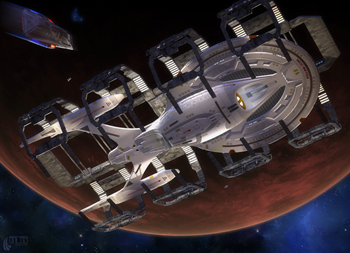 After round the clock work on design and construction, a new power system was completed and was installed on the prototype for testing. A combination of the traditional Warp Drive requested by the Federation Council and the advanced Quantum Slipstream Drive, tests found that the Saucer Module featured a power surplus while the Stardrive maintained a dangerous shortage of energy. Making matters worse, the defensive systems - which consumed the most power - and the sensor pallets had just begun installation. This created severe problems and derailed all current work on the ship to focus on this growing problem. The Theoretical Propulsion Group was forced to return to their drawing board once more to create a new power system and the construction was perilously close to its deadline. Further, the sensors – refitted designs of those used on the Luna and Sagan Classes – had been greatly enhanced to allow for detailed, highly sensitive long-term research without significant impact to other shipboard operations. Several of the upgraded pallets, though, were created using substandard lenses which could provide faulty readings during high resolution scans. This required the removal and reworking of these pieces of equipment due to the reduced sensitivity. The Corp of Engineers completed installation of the defensive shields, making the necessity of the new Warp Core even more apparent as the new Starfleet High Intensity Energy Level Deflection System, aka S.H.I.E.L.D.S., were tested. The multi-layered shields of the Century had built in redundancies to allow the replacement of lost shields during combat; although, all available energy was quickly expended, and half the ship lost power within minutes of activation. Political pressures were coming into play as a change in military policy within the Federation Council had shifted focus again with the cooling of relations between the primary galactic powers and the restoration of the Khitomer Alliance.
After round the clock work on design and construction, a new power system was completed and was installed on the prototype for testing. A combination of the traditional Warp Drive requested by the Federation Council and the advanced Quantum Slipstream Drive, tests found that the Saucer Module featured a power surplus while the Stardrive maintained a dangerous shortage of energy. Making matters worse, the defensive systems - which consumed the most power - and the sensor pallets had just begun installation. This created severe problems and derailed all current work on the ship to focus on this growing problem. The Theoretical Propulsion Group was forced to return to their drawing board once more to create a new power system and the construction was perilously close to its deadline. Further, the sensors – refitted designs of those used on the Luna and Sagan Classes – had been greatly enhanced to allow for detailed, highly sensitive long-term research without significant impact to other shipboard operations. Several of the upgraded pallets, though, were created using substandard lenses which could provide faulty readings during high resolution scans. This required the removal and reworking of these pieces of equipment due to the reduced sensitivity. The Corp of Engineers completed installation of the defensive shields, making the necessity of the new Warp Core even more apparent as the new Starfleet High Intensity Energy Level Deflection System, aka S.H.I.E.L.D.S., were tested. The multi-layered shields of the Century had built in redundancies to allow the replacement of lost shields during combat; although, all available energy was quickly expended, and half the ship lost power within minutes of activation. Political pressures were coming into play as a change in military policy within the Federation Council had shifted focus again with the cooling of relations between the primary galactic powers and the restoration of the Khitomer Alliance.
The Theoretical Propulsion Group had achieved their answer though: the Coaxial Warp Drive. The Coaxial Drive technology had been prototyped in the 23rd Century by theorist Bendes Kettaract and would allow for a using vessel to travel at incredible speeds with power to spare. During testing, however, a devastating accident occurred that destroyed subspace and led to the technology being abandoned due to safety concerns. While the Corps of Engineers and the Theoretical Propulsion Group had never been able to build a working model, the Federation Starship Voyager had directly interacted with and observed a vehicle utilizing this technology while trapped in the Delta Quadrant. Using lessons learned during this first contact, the Corps of Engineers were able to work closely with Capain Vorik, who had served on the Voyager, to build a working prototype. The designs retrieved by Voyager were further enhanced through the usage of Khitomer Alliance technologies, specifically components that had been devised by the Romulan Republic to help regulate their artificial quantum singularity propulsion matrix. Nonetheless, this experimental technology would still be in opposition to the design edict of the Federation Council. With the support of Starfleet Command, the Federation Council was successfully lobbied to allow the Century to be fitted with the prototype Coaxial Warp Drive while tests were completed. The vessel was returned to San Francisco Orbital Fleet Yards, Earth, for completion.
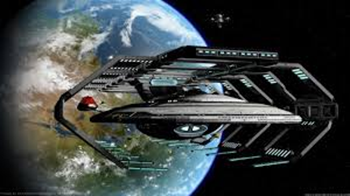 Support and Auxiliary systems were quickly installed utilizing replication construction technology. One of the most ingenious additions was the inclusion of an automated repair system reverse engineered from a captured Dominion Battlecruiser and supplemented by research from the Borg Cube Artifact. Holographic emitters were also placed on every deck so that emergency holographic programs could be permitted access to any location aboard the ship. The final component installed was the Century’s advanced communications array. Attached to the Long-Range Sensor Antennae, the Century's Communications Array would be capable of reaching distances beyond even the most advanced communications satellites and, as needed, could supplement communications relay stations in processing and distributing subspace communications. Additional resources based upon technologies derived from the Khitomer Alliance were also incorporated into the new Starship Century to promote the new relationship of many of the members.
Support and Auxiliary systems were quickly installed utilizing replication construction technology. One of the most ingenious additions was the inclusion of an automated repair system reverse engineered from a captured Dominion Battlecruiser and supplemented by research from the Borg Cube Artifact. Holographic emitters were also placed on every deck so that emergency holographic programs could be permitted access to any location aboard the ship. The final component installed was the Century’s advanced communications array. Attached to the Long-Range Sensor Antennae, the Century's Communications Array would be capable of reaching distances beyond even the most advanced communications satellites and, as needed, could supplement communications relay stations in processing and distributing subspace communications. Additional resources based upon technologies derived from the Khitomer Alliance were also incorporated into the new Starship Century to promote the new relationship of many of the members.
Construction of the prototype – the USS Century – was completed and the vessel was transferred to Sol Station from San Francisco Fleet Yard for testing. Due to the loss of the Starship Enterprise at the Battle of the Foundry, the prototype Century was renamed Enterprise in honor of the lost vessel and underwent shakedown testing. While Enterprise had been officially launched in 2436 under the command of Captain Sythi sh'Ijhossaa, the vessel was not formally christened until 2439 due to extended shakedown testing.
Current Mission
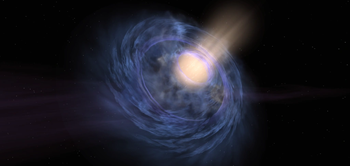 Placed under the command of Captain Wilkan Targaryen on Stardate 116182.2 following Captain sh'Ijhossaa's promotion to Commodore, the Starship Enterprise was assigned by Starfleet Command to a five-year mission of exploration in deep space. During its first assignment, Enterprise was redirected to Deep Space 9 in the Bajor Sector following contact between Starfleet's Forward Observation Zone with representatives of the Dominion. During investigation Enterprise, as the Federation's Flagship, was selected to travel to the Gamma Quadrant to investigate the incident under the terms of the Treaty of Bajor.
Placed under the command of Captain Wilkan Targaryen on Stardate 116182.2 following Captain sh'Ijhossaa's promotion to Commodore, the Starship Enterprise was assigned by Starfleet Command to a five-year mission of exploration in deep space. During its first assignment, Enterprise was redirected to Deep Space 9 in the Bajor Sector following contact between Starfleet's Forward Observation Zone with representatives of the Dominion. During investigation Enterprise, as the Federation's Flagship, was selected to travel to the Gamma Quadrant to investigate the incident under the terms of the Treaty of Bajor.During the investigation the Enterprise located a damaged Dominion vessel led by a collection of representatives of each of the major species within the government. Led by the Founder known as Odo, their vessel had been damaged by a creature that was later identified as the forebearer of the Founder species. Due to the Federation's assistance in recovering Odo, the diplomatic negotiations between the Federation and the Dominion led to a brokered peace treaty between the two powers for the first time since the Dominion War. With the approval of the Dominion and Starfleet Command, Enterprise was authorized to remain in the Gamma Quadrant on a five-year mission of exploration of the region with DS9 as its home port.
Categories: No categories found